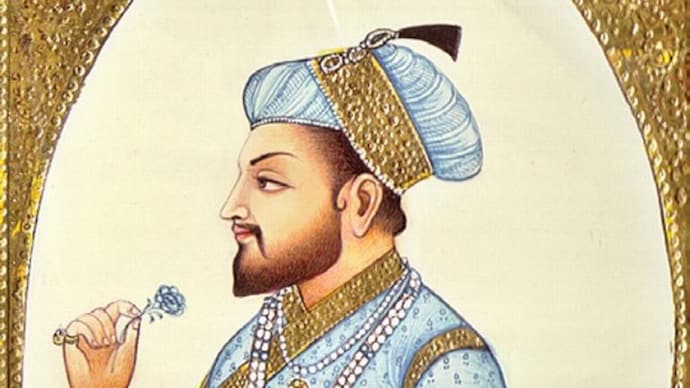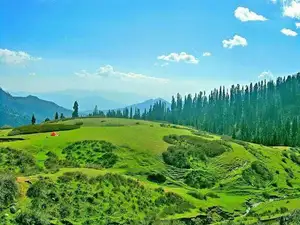

Shalimar Garden, also known as Shalimar Bagh, is a historic Mughal garden located in Lahore, Pakistan. It is one of the most splendid and well-preserved examples of Mughal garden design and architecture, known for its historical significance and aesthetic beauty. Here are the complete details:
Table Of Content
Historical Background
- Construction: The garden was built during the reign of the Mughal Emperor Shah Jahan, who also commissioned the Taj Mahal. The construction began in 1641 AD and was completed in 1642 AD.
- Architects: The design of the garden is attributed to a team of expert architects led by Ali Mardan Khan, Mulla Ala-ul-Mulk Tuni, and the gardener of the Shah Jahan's court.
- Purpose: The garden was intended as a royal pleasure garden and a retreat for the emperor and his courtiers.

Construction Cost
The exact cost of constructing Shalimar Garden is not definitively recorded in historical documents. However, it is known that the construction was an expensive and elaborate project, befitting the grandeur and scale of Mughal architectural endeavors. The funding for the garden came from the imperial treasury, which was substantial given the resources of the Mughal Empire during the reign of Emperor Shah Jahan.
To put it in perspective, the construction of such gardens typically involved significant expenses for labor, materials (such as marble and sandstone), intricate water systems, and the importation of exotic plants and trees. The overall cost would have been considerable, reflecting the opulence and resources available to the Mughal court at the time.
Shah Jahan

Shalimar Garden Lahore Architects Name
The architects of Shalimar Garden in Lahore were a team of skilled designers and engineers. The key figures involved in the construction of the garden were:
- Ali Mardan Khan: He was a prominent engineer and architect in the Mughal court, renowned for his expertise in hydraulic engineering and garden design.
- Mulla Ala-ul-Mulk Tuni: Another highly skilled architect who contributed to the design and construction of the garden.
- Mulla Hayat: The gardener and horticulturist who played a significant role in the landscaping and planting of the garden.
These architects, under the patronage of Emperor Shah Jahan, created the splendid Shalimar Garden, which remains a masterpiece of Mughal garden design and architecture.
Ali Mardan Khan

Design and Layout
- Area: The Shalimar Garden covers an area of approximately 80 acres.
- Structure: The garden is divided into three terraces, each with its own distinct features. The terraces are named:
- Farah Baksh (Bestower of Pleasure)
- Faiz Baksh (Bestower of Goodness)
- Hayat Baksh (Bestower of Life)

Shalimar Garden Lahore Entry Price
The entry fee for Shalimar Garden in Lahore is generally nominal. As of the most recent information, the fee structure is as follows:
- For Pakistani Citizens: The entry fee is typically around PKR 20-30 per person.
- For Foreign Tourists: The entry fee is higher, usually around PKR 500-600 per person.
Please note that these fees can vary and it is advisable to check the latest information from official sources or at the entrance of the garden.
Features
- Fountains: The garden originally had 410 fountains, fed by a specially designed hydraulic system. The water system was ingeniously engineered to create various water features and cascades.
- Water Channels: The garden is crisscrossed by canals, known as the Shah Nahar (Royal Canal), which were sourced from the nearby Ravi River.
- Pavilions and Buildings: There are several beautiful pavilions and buildings within the garden, including the Sawan Bhadun Pavilion, Naqar Khana (the Drum House), and Khawabgah-e-Jahangir (Jahangir's Sleeping Chamber).
- Plantation: The garden features a variety of trees and flowers, including fruit trees like mango, orange, pomegranate, and plum, which were carefully selected to provide shade and beauty throughout the year.
- Marble Work: Many structures within the garden, including fountains and walkways, are adorned with exquisite marble work, characteristic of Mughal architecture.
Significance
- Cultural Heritage: Shalimar Garden is a UNESCO World Heritage Site, recognized for its historical and cultural significance.
- Tourism: It is a major tourist attraction, drawing visitors from around the world who come to admire its beauty and historical importance.
Preservation
- Restoration Efforts: The garden has undergone various restoration and conservation efforts to preserve its original grandeur and maintain its historical features.
- Management: It is managed by the Punjab Archaeology Department, which oversees its maintenance and upkeep.
Accessibility
- Location: The garden is located in the northeast of Lahore, along the Grand Trunk Road.
- Visiting Hours: It is open to the public daily, with specific visiting hours that may vary depending on the season.
Events and Activities
- Cultural Events: The garden often hosts cultural and musical events, providing a picturesque backdrop for various performances.
- Educational Tours: Guided tours are available for visitors who want to learn more about the historical and architectural significance of the garden.
Shalimar Garden remains a testament to the grandeur of Mughal architecture and horticulture, offering a glimpse into the opulent lifestyle and aesthetic sensibilities of the Mughal emperors.
Shalimar Garden Location
Shalimar Garden, also known as Shalimar Bagh, is located in the northeast of Lahore, Pakistan. It is situated along the Grand Trunk Road, a major historic highway that runs through the region. This location makes the garden easily accessible from various parts of the city and highlights its prominence as a significant cultural and historical landmark in Lahore.
You May Also LikeKeenjhar Lake Travel Guide
FAQs about Shalimar Garden, Lahore
What is Shalimar Garden?
Shalimar Garden, also known as Shalimar Bagh, is a historic Mughal garden in Lahore, Pakistan. Built by Emperor Shah Jahan between 1641 and 1642 AD, the garden is renowned for its exquisite terraces, intricate fountains, and beautiful pavilions, embodying the splendor of Mughal garden design.
Where is Shalimar Garden located?
Shalimar Garden is situated in the northeast of Lahore, along the Grand Trunk Road. This strategic location makes it easily accessible and a prominent landmark in the historical city of Lahore.
What are the opening hours of Shalimar Garden?
The garden is generally open to the public from early morning until sunset, providing ample time for visitors to explore its beauty. However, the specific visiting hours may vary depending on the season and any special events, so it’s advisable to check in advance.
Is there an entry fee for Shalimar Garden?
Yes, there is usually a nominal entry fee for visitors to Shalimar Garden. The fee may differ for local and international tourists, ensuring the garden’s maintenance and preservation for future generations.
What is the historical significance of Shalimar Garden?
Shalimar Garden is a UNESCO World Heritage Site, celebrated as one of the finest examples of Mughal garden design. It was created as a royal pleasure garden and retreat for Emperor Shah Jahan and his court, reflecting the grandeur and sophistication of the Mughal era.
How many terraces does Shalimar Garden have?
Shalimar Garden is divided into three main terraces: Farah Baksh (Bestower of Pleasure), Faiz Baksh (Bestower of Goodness), and Hayat Baksh (Bestower of Life). Each terrace is distinct and carefully designed to provide different experiences and views.
How many fountains are there in Shalimar Garden?
Originally, Shalimar Garden had 410 fountains, fed by an intricate hydraulic system. These fountains are a key feature of the garden, adding to its beauty and creating a serene, refreshing atmosphere.
Can I take guided tours of Shalimar Garden?
Yes, guided tours are available at Shalimar Garden, offering visitors detailed historical and architectural information. These tours are a great way to learn more about the garden’s rich heritage and the Mughal era’s artistic and engineering achievements.
Are there any special events held at Shalimar Garden?
Yes, Shalimar Garden often hosts cultural and musical events, particularly in the evenings. The garden’s beautiful setting provides a perfect backdrop for these events, making them even more enchanting and memorable.
What are some key features of Shalimar Garden?
Key features of Shalimar Garden include its terraced layout, intricate fountains, water channels, marble pavilions, and a variety of trees and plants, including fruit-bearing trees. These elements combine to create a harmonious and picturesque landscape.
Who were the main architects of Shalimar Garden?
The main architects of Shalimar Garden were Ali Mardan Khan, Mulla Ala-ul-Mulk Tuni, and Mulla Hayat. Their expertise in architecture and horticulture played a crucial role in the creation of this magnificent garden.
How can I reach Shalimar Garden from the city center?
Shalimar Garden is accessible by car, taxi, and public transport from the city center of Lahore. Located along the Grand Trunk Road, it is relatively easy to find and well-connected to other parts of the city.
Is Shalimar Garden suitable for family visits?
Yes, Shalimar Garden is a popular spot for families, offering a serene and beautiful environment for picnics and leisurely strolls. Its historical and cultural significance also provides educational value for visitors of all ages.
What should I bring when visiting Shalimar Garden?
Visitors are advised to bring comfortable walking shoes, sun protection (such as hats and sunscreen), and water when visiting Shalimar Garden. Cameras are also recommended to capture the garden’s stunning beauty and historic features.
Are there any restaurants or cafes inside Shalimar Garden?
While there are no restaurants or cafes inside Shalimar Garden, there are several eateries nearby where visitors can enjoy local cuisine. These options provide convenient dining choices after a day of exploring the garden.Conclusion
Shalimar Garden in Lahore stands as a timeless testament to the splendor and sophistication of Mughal architecture and horticulture. Built during the reign of Emperor Shah Jahan, this magnificent garden encompasses the essence of Mughal design with its exquisite terraces, intricate fountains, and beautifully crafted pavilions. Its historical significance as a UNESCO World Heritage Site highlights its importance as a cultural and architectural landmark. The garden's layout, featuring three distinct terraces—Farah Baksh, Faiz Baksh, and Hayat Baksh—offers visitors a unique and serene experience, complemented by the harmony of water features, lush plantations, and elegant marble work. The expertise of architects like Ali Mardan Khan, Mulla Ala-ul-Mulk Tuni, and Mulla Hayat is evident in every aspect of the garden's design, from the advanced hydraulic system to the carefully selected trees and flowers.









